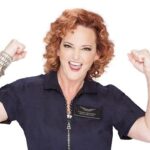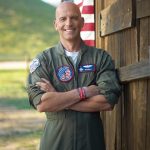
Charlie Dry
- NASA Test Astronaut
- Oklahoma Aviation and Space Hall of Fame Inductee
- Founder and President of Government Procurement Solutions, LLC
Charles Hobson Dry was born in Ardmore, Oklahoma on October 27, 1938. Raised in small, Tishomingo, Oklahoma, Charlie began designing and testing homemade rockets at an early age. His fascination for aeronautics meant only one thing to him – that he would someday work in aviation and space. To this end, he attended Murray State...
read the restCharles Hobson Dry was born in Ardmore, Oklahoma on October 27, 1938. Raised in small, Tishomingo, Oklahoma, Charlie began designing and testing homemade rockets at an early age. His fascination for aeronautics meant only one thing to him – that he would someday work in aviation and space. To this end, he attended Murray State College, East Central University and the University of Oklahoma where he earned a Bachelor of Science degree in Mathematics and Physics. Charlie continued his education with certified courses at the University of Houston and UCLA.
After graduation, Charlie began his aviation and space career at the highly classified China Lake Naval Ordnance Test Range (NOTS) where he designed test concepts and special flight analysis systems. Soon after, Charlie was promoted to NOTS Flight Test Engineer on the Test G-Force Sled. With this position came an array of vigorous testing including manned and unmanned G-force tests and evaluations of G-suits.
Charlie was then selected as Senior Research Engineer for North American Aviation in Tulsa, Oklahoma, responsible for analyzing guidance position data to determine the accuracy of the B-52 aircraft and the WS-131B nuclear warhead missiles. Charlie also served as Chief Liaison between North American Aviation and the United States Air Force.
It is no coincidence that, in 1966, Charlie captured the attention of NASA. He became the Senior Scientific Analyst at NASA’s Johnson Space Center in Houston, Texas, where he was responsible for directing and coordinating NASA’s engineering laboratory tests during spaceflight post-test evaluation.
As NASA’s space exploration progressed so, too, did Charlie who was selected to become a Test Astronaut. His mission, to perform an extraordinary array of tests on each spacesuit, life support system and spaceflight hardware with the ultimate goal of developing the procedures that would enable the astronauts to perform their tasks safely and competently. Each test held the element of the unexpected. Engineering designs were evaluated through trial and error, engaging the test astronauts in a deadly serious game of “what-if”. The dangers were real yet he followed his dream.
As a Test Astronaut, Charlie, in all practicality served as a human guinea pig, who was exposed to the dangers of spaceflight before the flight crews to ensure the safety and success of future space missions. From being exposed to up to nine times the gravitational pull of the earth on a jet-powered sled; to withstanding the G-force accelerations in the Centrifuge; being locked in an altitude chamber for weeks at a time; to float, tumble and spin in a KC-135 aircraft, “the vomit comet”, for zero-gravity experiments; to being left for days bobbing in a space capsule in the Gulf of Mexico with two other test astronauts; to being dropped from five stories in a lunar lander; it was just another day at the office for Charlie.
You’ve all seen the results of NASA Test Astronaut experimental work. Neil Armstrong walking on the moon; James Irwin driving the Lunar Roving Vehicle; the space station and more, but the behind-the-scenes test astronauts’ story has never been told. While they did not receive the attention that the astronauts received, Charlie Dry and other test astronauts are the brave men who performed the dangerous tests first; the men who were part of the team that made space missions possible.
From simple Tishomingo, Oklahoma beginnings with homemade rockets, Charlie took chances and crossed many hurdles to achieve his dream. His story is unique, motivating and full of unknown facts that are of human interest. His chronicle charts personal and American history that is ever-interesting and uplifting to all audiences Charlie is currently writing his autobiography, What NASA Forgot to Tell Me, to be published in 2016. He is also author of the award-winning Early Childhood Phonics and The Junior Astronaut Handbook books.
read less



